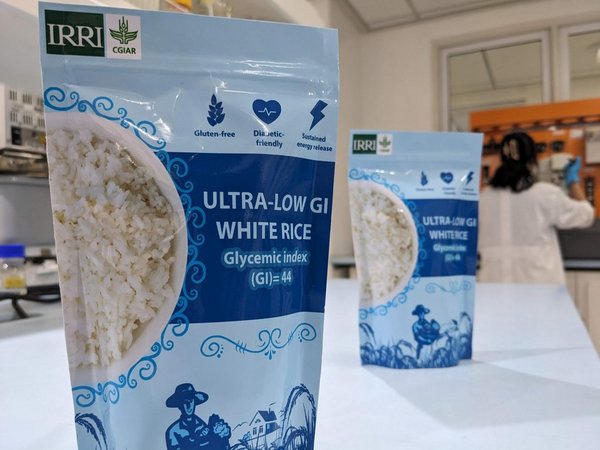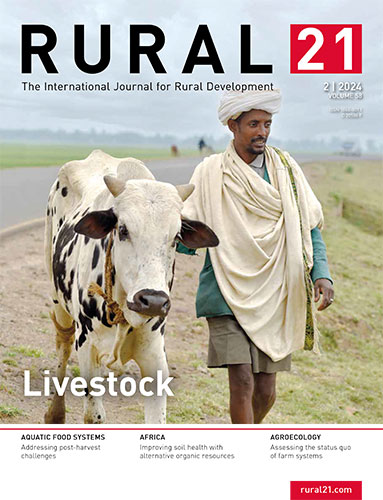 Read this article in French
Read this article in French- Share this article
- Subscribe to our newsletter
IRRI – identifying genes for low glycemic index and high protein in rice
In line with intensified efforts to combat the multifaceted impacts of malnutrition, there is a pressing need to develop diabetic-friendly, healthier rice varieties to tackle the escalating global prevalence of diabetes. In a recent study, published in the Proceedings of the National Academy of Sciences (PNAS) in August, scientists at the International Rice Research Institute (IRRI) revealed a superior set of lines that exhibited ultra-low GI (below 45%) with an unprecedented protein level (15.99), which is twice the content usually found in conventional milled rice.
Rice varieties with higher protein content may contribute to slower digestion and absorption rates, potentially helping control blood glucose levels, further enhancing its ultra-low GI characteristics. “Collectively, these findings underscore the stacked potential and benefits of low GI and high protein rice to offer a substantial source of protein and essential amino acids such as lysine for consumers, particularly in regions where rice is a dietary staple,” says Dr Nese Sreenivasulu, corresponding author of the paper and Principal Scientist at the IRRI Grain Quality and Nutrition Center. He adds that the lines included in the study also generated yields comparable to existing high-yielding rice varieties.
High protein rice may help boost the diets of half a billion protein-deficient consumers
The healthier rice lines were developed by intercrossing an inbred variety from Samba Mahsuri and the amylose extender of IR36. The results could help address the growing incidence of diabetes and the need for adequate protein intake for hundreds of millions of people at risk.
Globally, about 537 million adults suffer from diabetes, and the number is expected to grow to 783 million by 2045. Low- and middle-income countries account for more than three-quarters of diabetes incidences, with 60 per cent of the global diabetic population living in Asia. High-protein rice may help boost the diets and health of half a billion protein-deficient consumers, many of whom live in South Asia and Central Africa. “Considering that rice is a staple food for a substantial portion of the global population, it is crucial to deploy high-yielding rice cultivars with milled rice samples possessing high-quality protein and ultra-low glycemic index to address the triple burden of nutritional challenges among low- and middle-income communities,” says Dr Gurdev S. Khush of the University of California/USA, co-corresponding author of the paper. Dr Sreenivasulu’s team and partners now seek to incorporate these genes into future breeding programs and popular varieties grown across Asia and Africa.
“With their remarkably low GI and protein content surpassing traditional rice varieties, these high-yielding nutritious rice varieties will pave the way to addressing critical food and nutritional security targets,” says IRRI Director General Dr Yvonne Pinto. The study was conducted in collaboration with the University of California, Davis, the Max Planck Institute of Molecular Plant Physiology/ Germany and the Center of Plant Systems Biology/ Bulgaria.
(IRRI/wi)
Reference:




Add a comment
Be the First to Comment